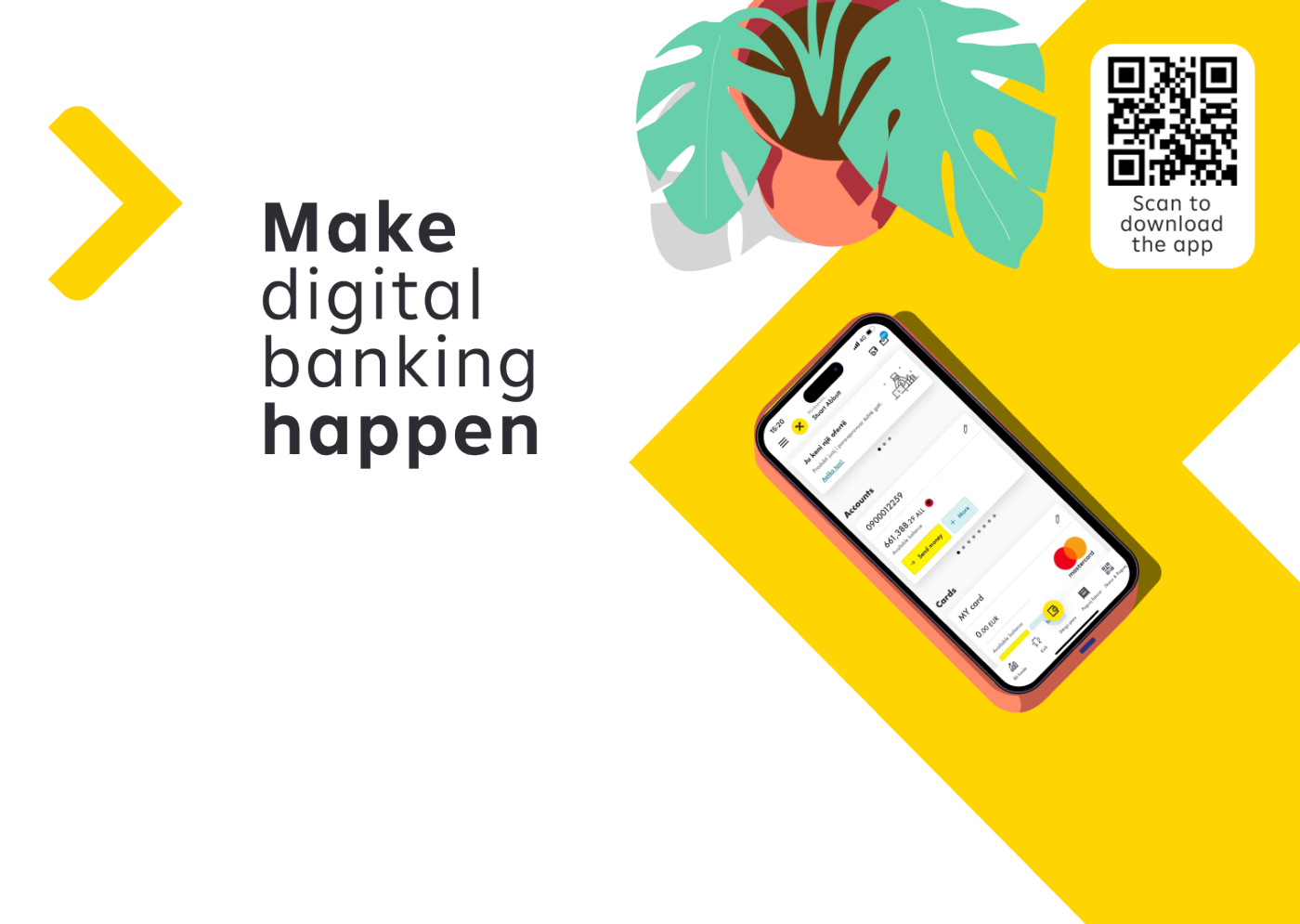Security of online transcation
The latest technology applied through all the platform, so you can fell safe and secure for all the performed transactions
In the digital platform Raiffeisen ON, we have taken care to provide the strongest security elements in the national and international market. Please be so kind to dedicate some mintutes from your time to become familiar with the specifics of these elements and some security advices that you may need during your navigation in the digital platform Raiffeisen ON.
Credentials
- Username/Password/PIN
Do not share username with any other person
Define a non-easy to guess username
Never write it down - Password/PIN
Change Password/PIN frequently and in any occasion you suspect it has been compromised and never write them down.
Complexity of the password is enforced via password policy implemented in Digital Banking.
While defining password do not use easy to guess data (family member’s: name, surname, birthdays, age, or current year, pet name, words like password, birthplace …)
Do not use password/PIN for Digital Banking for anything else (email, shopping account, cards PIN)
- The bank will never ask for your credentials like PINs or passwords, or Credit Card details.
Security Elements
- SMS OTP – used to authenticate user, in different actions in digital banking
SMS OTPs are sent via SMS to mobile number declared from user to bank. In case you change mobile number please update this information to bank.
Do not share OTPs with any other person.
- Mobile Token/ Cronto Token/HW Token – used to authorize transactions
In case you lose your device, where the security element is installed, please block/delete license from web Digital Banking, or notify bank to block the respective license/s.
Digital Banking Access
- Do not forget to logout after you are done using the Digital Banking web/mobile application, especially in shared devices.
- Do not share personal information, such as account numbers, credit card numbers, over the telephone, through the mail, or over the Internet -- unless you initiated the contact or know with whom you are dealing.
- Apply all updates for Digital Banking mobile app.
- Please do not do any banking transaction on computers open to public access. Many different type of hacking programs enable hackers to access your account details and personal information through computers which are open to public access.
- Never access your Digital Banking accounts through hyperlinks in e-mails, pop-up windows, search engines. Do not access any sites that require you to provide personal or confidential/ sensitive information or allow you to carry out banking transactions. Always type in the full address of the site that you want to access in the respective bar.
Phishing Attacks
What is phishing?
Phishing is an attempt that aims at manipulating you into thinking a legitimate organization is demanding information from you. These demands can seem safe on the surface or may seem to come from a valid source. These scams require you to reply to an email, respond to a request on the phone, or click on a link to a phishing website.
There are some tips that help you understand phishing emails and develop your phishing awareness:
- Fake URL
The URL in a phishing message in your inbox may seem perfectly legitimate. However, if you put your mouse over the URL without clicking it, you can see the redirection page (hyperlinked address). If the URL address in your inbox is different from the address hyperlinked, this will be a phishing email. - Domain name
In phishing emails, cybercriminals use different domain names from the legitimate source. When you look at the last part of a domain name, you can see the domain is different from the original. - Poor spelling and grammar
A message with poor grammar or spelling mistakes will probably be a phishing scam. Institutional messages are usually reviewed, and one cannot find any spelling, grammar mistakes. - Personal information
An official institution never demands your password, credit card number, or the answer to a security question on email. Beware of such messages. - Beware of the message content
If you get a message informing you that you have won a lottery, you have never bought, it then is a scam. Also, if the message makes unrealistic threats, or demands money, it will be a scam.
Other
- Don't provide identity or other confidential information without confirming that the site is secure. Check that the address begins with https:// followed by the respective name of the required site and that the page shows a padlock in the lower or upper toolbar.
- Do not open SMS/MMS, electronic mail messages without checking the identity of the sender and the subject. If you have any doubt as to the origin of the message delete it immediately and don't open any file or attachment, it may contain.
- Is the customer responsibility to:
Keep Operating system of your PC always up to date
Install antivirus software and always keep it up to date. An outdated antivirus software is the same as not having one.
- Do not download and install any non-standard or non-trustworthy software to your device/s.
- Do not open unknown SMS/MMS or e-mail messages or untrustworthy/unknown files.
